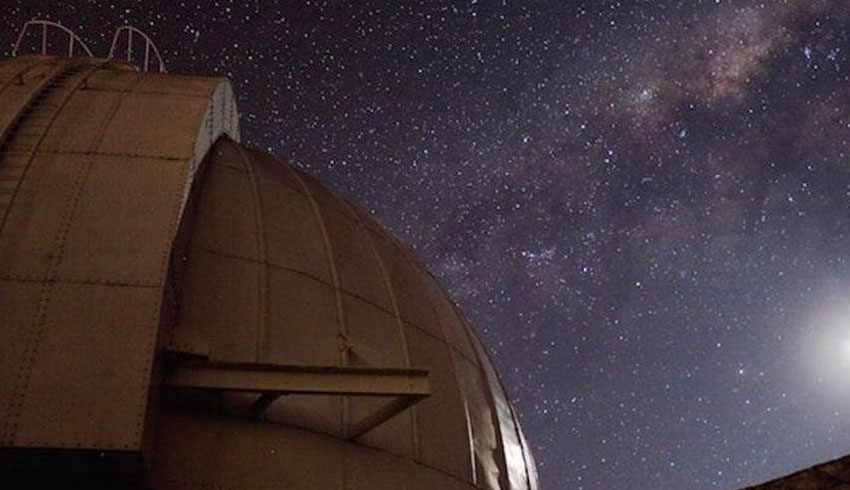COVID-19 has forced many organisations to work differently, including the NSTF and ANU Institute for Space (InSpace) teams who are working remotely with businesses, institutions and researchers around the world via video.
One of our most exciting remote partnerships has been with Queensland-based rocket company Gilmour Space Technologies.
Director of ANU InSpace, Anna Moore, asked NSTF manager Eduardo Trifoni about this week’s testing and how COVID is changing the way he and his team work.
Trifoni is an internationally recognised space test scientist with experience in carrying out research in frontier fields, including hydrogen energy and experimental aerothermodynamics.
“The NSTF was closed in March. Reopening first was fantastic. After weeks of working with Gilmour Space Technologies via video conferencing, we received their component on its own. The GST team couldn’t make the trip to Canberra due to Queensland travel restrictions,” the ANU said.
Gilmour Space Technologies has a new avionic component of the guidance, navigation and control system they are developing for a revolutionary hybrid propulsion rocket that could be the first commercial rocket of its kind to launch in the world. It’s an Australian first.
To be involved in this unique mission in a way that helps ensure success shows just how far the Australian space industry has come and how much innovation is happening here.
Their orbital rocket is set to launch in 2022, and this week’s intense vibration testing is meant to simulate the conditions of the upcoming rocket launch on this flight hardware. It’s the first in a series of tests that will help ensure mission success.
“It was a great outcome, especially after so many weeks of working with their team remotely. We can’t wait to see their progress in the next several years. It’s exciting to watch our clients as they get closer and closer to new missions and new successes.”
The reopening of the Mt Stromlo NSTF site was carefully considered by ANU leaders to make sure the timing suits the team’s health and safety.
The testing was performed with assistance from the ACT government, under the Key Capability Area Funding Program.
“The ACT government is a strong supporter of space testing and has been critical in helping many Australian space companies test their payloads at our world-class facility and with our team of experts,” the ANU said.
Together, ANU and the ACT government are making the ACT a hub for space excellence across Australia and the Asia-Pacific region.
Building on this, a new infrared telescope, to be designed and built by astronomers at the ANU, will monitor the entire southern sky in search of new cosmic events as they take place.
DREAMS – the Dynamic REd All-Sky Monitoring Survey – will be located at the historic Siding Spring Observatory in northern NSW.
The telescope will be used by researchers all over the globe and propel Australia to the forefront of the emerging field of transient astronomy – the study of cosmic events almost in “real time”.
Lead researcher Professor Moore said a transient survey of the southern sky in the infrared had never been done and would help find many hidden treasures in the universe.
“DREAMS will allow us to ‘see’ the universe in an entirely new way. Infrared telescopes can study dusty and distant regions of space that are impenetrable to optical telescopes, unveiling new stars, nebulae, mergers, galaxies, supernovae, quasars and other sources of radiation new to science,” Professor Moore said.
DREAMS consists of a fully automated 0.5m telescope and infrared camera. In each snapshot, DREAMS “sees” 3.75 square degrees (20 times the moon’s size) and will be able to map the entire southern sky in three clear nights. The telescope is 10 times more powerful than its nearest competitors.
The data captured by DREAMS will help detect the source of gravitational waves and the collision of neutron stars and black holes.
Assistant Mansi Kasliwal, from the California Institute of Technology (Caltech), added, “DREAMS will enable multi-messenger astronomy – the discovery of new events by observing the sky using different wavelengths of light. By doing so, it aspires to pinpoint elusive gravitational wave events.
“Neutron star black hole mergers are especially exciting as they create heavy elements that shine in the infrared,” Kasliwal added.
According to Dr Tony Travouillon, a co-investigator and lead technical manager on the project, DREAMS is innovative and economical.
“Surveying the sky in the infrared has always been limited by the cost of the cameras and not the telescope,” Dr Travouillon, who is based at the ANU Research School of Astrophysics and Astronomy, said.
The telescope will be completed in early 2021, with operations beginning soon after. Co-investigator Professor Orsola DeMarco, from Macquarie University, will use simulations to explain coalescing, or merging, stars captured by DREAMS.
DREAMS is funded through an Australian Research Council Linkage Infrastructure, Equipment and Facilities award of $632,000 and a cash contribution of $750,000 from ANU and partners the Australian Astronomical Optics, Caltech, the Chinese Academy of Sciences, Curtin University, Swinburne University, Macquarie University, Monash University, MIT, the University of New South Wales, the University of Sydney and the University of Western Australia.

